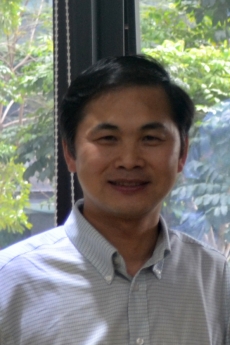Although antiretroviral therapy (ART) treatments for people living with HIV (PLWH) has decreased HIV related dementia, the prevalence of HIV-1 associated neurocognitive disorders (HAND), a spectrum disorder that results in neurocognitive impairment remains prevalent. Studies suggest that HAND results from HIV replication in the brain which induces neurodegeneration, particularly in subcortical structures such as striatum, which is extremely vulnerable.
Previous work has implicated the HIV envelope protein gp120 and transactivator of transcription (Tat) as having neurotoxic effects in different types of neurons. It remains a question whether this toxicity is the underlying mechanism for HAND, because with effective ART, HIV replication is limited. This should minimize the continued exposure of neuronal tissue to these HIV components. Here we test an alternative hypothesis that HIV gp120 and Tat toxicity induce microglial activation and decrease brain derived neurotrophic factor (BDNF) expression. We will test the hypothesis that HIV proteins interact with inflammatory processes induced by microglia activation, to synergistically potentiate HAND development. We will test this hypothesis in striatal medium spiny neurons (MSNs) of nucleus accumbens from mice and in induced MSNs derived from human induced pluripotent stem cells (iPSC). Aim 1 will test if neuronal excitability, Ca2+ dynamics, and BDNF mediated synaptic signaling of MSNs are modified in mice treated with HIV gp120 or Tat. Specifically, we will test our hypothesis that neuroexcitability is associated with microglia activity, by using Ca2+ imaging and whole cell patch clamping technology. Aim 2 will test if iPSC derived MSNs will be subject to neuronal damage in the presence of HIV gp120, Tat, or both gp120 and Tat and whether microglial activation impacts neuronal morphology or function.
Our work seeks to improve understanding of mechanisms of HIV neuropathology by providing evidence that MSN-microglia interaction leads to inflammation, decreased BDNF, and the development of HAND. This research may help develop strategies to protect PLWH from developing HAND or HIVassociated dementia. This work will also provide opportunities for students underrepresented in the sciences to have hands-on experience with iPSC technology, patch clamping, and Ca2+ imaging. The project will help us to set up a platform to perform in vitro modeling of HIV toxicity, neurodegeneration and provide us preliminary data to compete for support from NIH and other external grant funding agencies.


